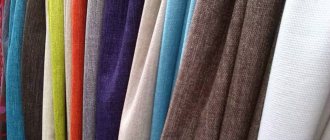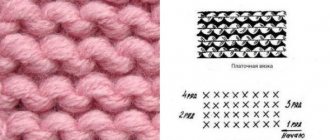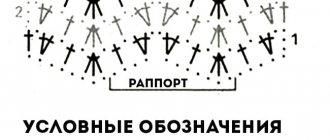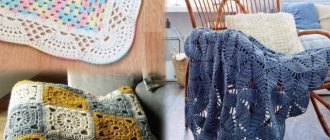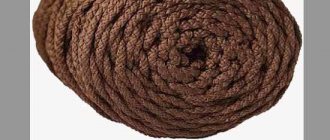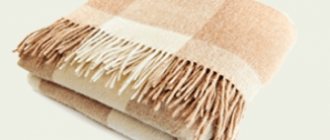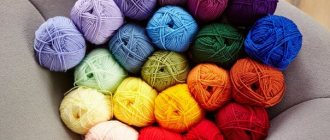A warm knitted blanket made from plush yarn will be a good gift for young parents. Made with your own hands, this gift will keep your baby warm in winter and securely wrapped in summer. In addition, the bedspread can decorate the room and fit harmoniously into any interior, from a children's room to a large living room.
This article will help you decide how to choose yarn and which tools are best to use for your first project: knitting needles or a crochet hook. In addition, methods of knitting blankets will be described for both beginners and experienced craftswomen.
Pattern selection
The classic “4x4 checkerboard” pattern will be clearly visible on plush yarn
The “Rice” pattern is a very simple pattern obtained by alternating knit and purl stitches, also perfect for plush
Knitting even a small blanket is quite a labor-intensive task, so it is better to choose a simple pattern. Traditionally, it is customary to choose sectional patterns for children's clothes.
The “Grain” pattern is a sectional one and is easy to knit according to the pattern
Knitting pattern for a blanket for a newborn “Garf Stitch”
Striped plaid knitted in garter stitch
For example, waffle. To knit a baby plush blanket with this pattern, you will need about 720 meters of yarn (about 6 skeins).
The simplest plush blanket knitted
Knitting a blanket with knitting needles (step-by-step instructions)
One-piece products are often knitted using knitting needles. This is difficult given the large dimensions of the product. For beginners, it is better to use simple drawings. It would be ideal to make the product using stockinette stitch. It's easy to create a garter stitch item.
- Such products will knit faster, and with careful work the result will not disappoint.
- You can use braids as a pattern. They will give the product greater elegance, without requiring any special skill from the needlewoman.
- Efforts will have to be made when knitting braids in complex weaves. Aranas look beautiful, but require experience from the craftswoman.
Attentiveness at work. It is permissible to use any suitable patterns: Openwork, textured.
Each option is first carefully thought through and their capabilities assessed. It is possible to make a blanket using knitting needles from individual squares that will need to be sewn.
Waffle pattern diagram
A simple waffle pattern is good for knitting children's items, as the fabric is soft due to its uniform thickness
We cast on the number of loops that are a multiple of 10. Then we follow the diagram.
1 row. Remove the first loop, *knit 4, purl 1 with the thread left on the outside of the work - that is, purl “in reverse”*
We carry out the pattern in *…* to the end of the row and finish with an edge purl.
2nd row. Remove the edge loop and purl the entire row.
3rd row. We knit in the same way as row 1.
4 row. Repeat row 2.
5 row. Repeat row 1.
6th row. Remove the edge stitch, *knit 4, purl 1*, edge stitch.
We repeat these 6 rows to the length we need.
Crochet waffle pattern for a cozy and light blanket
Keep in mind that plush yarn is very delicate: if the knitting is too tight, it may become deformed during use.
Children's knitted plush blanket “Waffle”
Unusual plush blanket with a bunny, made with a waffle pattern
In order to check how the plush yarn will behave in the finished product, knit a small sample measuring 15x15 cm. This will help you determine both the size of the knitting needles and the tension of the thread while knitting.
Double-sided “cage” pattern of knit and purl loops with a relief texture
Difficulties in knitting a blanket
A blanket is a large product. Despite its apparent simplicity, knitting can take a lot of time. The main thing is not to lose interest in the thing, but to finish what you started.
Another difficulty when knitting a blanket lies in the monotony of the process; there is a high risk of getting bored.
- They often prefer to make the product from thick threads. Working with them presents a certain burden.
- If you knit a blanket as a whole fabric, then by the middle of the work you will end up with a large, heavy bundle that will get tangled under your hands.
- When knitting using a pattern, you will have to carefully monitor the progress of the work.
The same applies to calculations before starting knitting. Any mistake can lead to the need to dismantle part of the product, and you won’t want to do a large amount of work all over again.
Scheme of the "bump" pattern
Pattern diagram and example of a canvas with the “Bumps” pattern
We knit a chain of chain stitches of the required length. If you want a rectangular-shaped blanket, then it is better to choose the long side: this way the pattern looks more impressive. We skip 5 air loops and insert a hook into the 6th. We grab the working thread, pull it through the loop and leave it on the hook. The result was an incomplete single crochet.
Using a hook, we grab the thread in the sixth loop from it and bring out a new one
Place the hook in the same loop again and knit. You should now have three loops left on your hook. To form a bump, we catch the working thread and pass it through all the loops.
Making three double crochet stitches
You can make as many partial single crochets in one loop as you need. The optimal number is 3-5 columns.
We connect the existing three columns of loops and knit at the same time
After we have knitted the first cone, we make a connecting air loop, step back 2-3 loops from our cone, and in the 3rd we form a cone again. If you want the cones to be located one above the other, then in the next row place it on the same loop that was used to tighten the columns.
To perform the same element side by side, we make 2 air loops, make one or two more “bumps”
In order to arrange the pattern in a checkerboard pattern, the bump of the next row must be knitted on a connecting air loop. The cones will be more voluminous if you knit them from incomplete double crochets.
Soft textured cones will really appeal to the little owner
To do this, knit not only the first loop, but also the yarn over, and leave the loops on the hook. A plush yarn binding will give the product a finished look.
An example of using “cones” on the main canvas to create a pattern
Whatever pattern you choose, a knitted blanket made of plush yarn will warm your child and bring an atmosphere of comfort and care into your home.
Children's summer blanket made of light plush yarn
Children's blanket Bear with hearts made of plush yarn
Plush yarn blanket for a newborn with a house in the middle
Advantages and disadvantages of a plush blanket
Like any textile, plush has pros and cons.
Advantages of the material:
- Comfort. The canvas is pleasant to the touch, personifies comfort and reminds of home.
- Practicality. In cool or rainy weather, the blanket provides warmth without making you feel suffocated.
- Hypoallergenic. Despite the synthetic component, plush does not cause irritation or unpleasant sensations, which means even a child can use blankets made from this material.
- Easy care. Velvety bedspreads with synthetic fiber do not absorb moisture well, making it difficult to stain them. However, they are easy to wash, dry quickly and do not become stiff.
- Durability. With proper care it will last for many years. Even in the bright sun the blanket will not fade.
- Reasonable price. Unlike designer bedspreads, a plush blanket has a low price, and you can order it in any online store, even without pre-ordering.
A useful article about the features of washing a blanket in a washing machine.
The disadvantages include:
- Dust collection. Due to the nature of the fiber and pile, thick plush blankets quickly accumulate dust particles. Although the material does not provoke allergies, it can be caused by other allergens deposited on the fabric (animal hair, plant pollen).
- Price of natural fiber. Synthetic plush is much cheaper than natural plush (made of silk or wool).
- The need for systematic care. The material requires compliance with the operating rules, otherwise the canvas will fray and stretch. Bedspreads with long hairs need to be combed by hand after each wash - this takes time.


